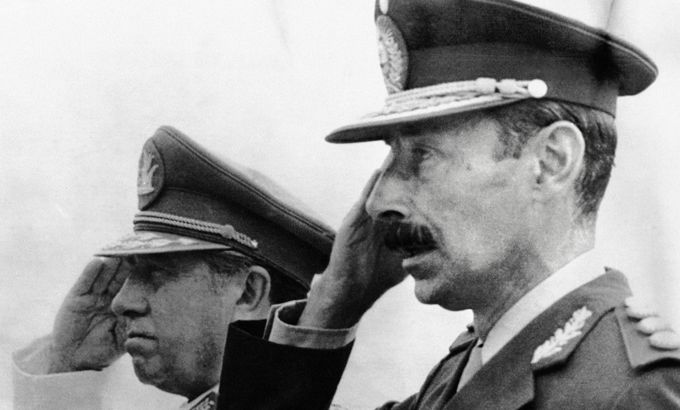
Tracing the shadows of ‘Operation Condor’
As Argentina opens a long-awaited trial over ‘Operation Condor’, why has no US official been held accountable?
A coordinated campaign to kill political dissidents across Latin America in the 1970s, all with the knowledge of the US, resulted in one of Latin America’s darkest periods.
|
“The US’ involvement is described as the green light, red light policy. Kissinger was in Santiago talking to Pinochet and the other leaders talking about human rights publicly – that’s the red light but privately giving them the green light by saying ‘Don’t worry too much about this, we support you’… You can condemn the CIA all you want for its complicity but to say that the CIA had operational control of Operation Condor, there is simply not the evidence there.“ – John Dinges, the author of The Condor Years |
Tens of thousands of people were kidnapped, tortured and killed by military regimes across the continent and those who fled repression in one country were often targeted in another – there was no escape.
‘Operation Condor’ involved six different nations – led by Chile’s former dictator Augusto Pinochet in response to the populist and socialist movements emerging throughout Latin America in the 1960s and 70s.
On Tuesday, a human rights trial began in Argentina to investigate the crimes committed during that operation.
It is the latest example of Latin American Countries coming to terms with their past through criminal proceedings and truth commissions.
However there has been no truth and reconciliation committee to determine the precise extent of the US’s role in the killing or disappearance of some 80,000 people – nor has there been any accountability.
Declassified cables show that the CIA and the US state department were aware of ‘Plan Condor’ early on.
An excerpt of a weekly summary from July 1976 reads:
|
“When we say there is no evidence we should say there are no documents that show operational participation by the CIA [to prove it]. The [US] legal attaches were very well connected in Southern America and they were aware of the operations.“ – Carlos Osorio, Southern Cone Documentation project |
“Intelligence representatives from Bolivia, Uruguay, Paraguay, Brazil, Chile and Argentina decided at a meeting in Santiago early in June to set up a computerised intelligence data bank – known as ‘Operation Condor’…”
Other cables show that Henry Kissinger, the then secretary of state, told his ambassadors not to confront the military governments over assassinations and torture.
And a 1978 briefing document for a US ambassador to the region says:
“By July 1976, the Agency was receiving reports that Condor planned to engage in ‘executive action’ outside the territory of member countries against leaders of indigenous terrorist groups residing abroad.”
To discuss the role the US played in ‘Operation Condor’, presenter Shihab Rattansi is joined by guests: John Dinges, the author of The Condor Years: How Pinochet and his Allies Brought Terrorism to Three Continents; and Carlos Osorio, the director of the Southern Cone Documentation project at the National Security Archive.